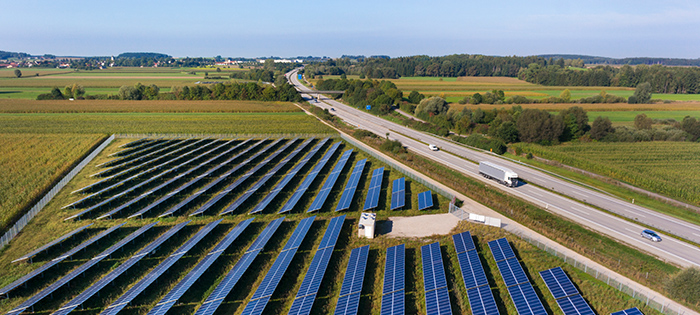- Community Solar
- Distributed Energy Resources
- Residential Solar PV
- Net Zero Energy Consumption
How Residential DER and Community Solar Solutions Can Support Net Zero Energy Residences

Policy drivers for net zero energy (NZE) building initiatives have emerged over the past several years in North America and the European Union. NZE initiatives are designed to meet customer needs for greener and more efficient dwellings, and to meet policymaker needs for reduced carbon emissions from energy consumed in the built environment. The emergency of residential distributed energy resources (DER) and community solar solutions, two key components of Guidehouse Insights’ residential utility customer solutions framework, are poised to create new opportunities for energy suppliers, utilities, grid operators, and home builders to construct and operate homes that meet NZE definitions and customer needs.
From a residential DER standpoint, the emergence of solar PV, energy storage, microturbines, fuel cells, bidirectional EV charging (vehicle-to-grid), and other grid-interactive load control technologies is taking shape. These residential DER are now being deployed for improved customer resilience, convenience, and local grid operator benefits across smart home/home energy platforms. Many of these DER meet the specific criteria that define NZE performance across various policy platforms.
Challenges Remain in Meeting the NZE Solution
But designing and operating an efficient residential dwelling with onsite DER is only part of the NZE solution. Several factors present a challenge for home builders. For example, many residences have limited (or no) available footprint for onsite renewable energy generation relative to 24/7 load needs. Further, the cost for truly off-grid solutions with onsite renewable energy generation remains prohibitive in most locales—even when there is available footprint. Lastly, energy procured from the local grid to meet the balance of the load requirements, specifically during peak demand periods, often has a significant carbon emissions impact. The emergence of community solar is poised to help overcome some of these challenges.
How Can Community Solar Help?
While there are several business models being deployed, Guidehouse Research defines community solar as the procurement of renewable electricity generated from offsite solar PV by residential customers under subscription agreements across a software-enabled bill crediting platform. Community solar procurement offers access to renewable energy at a scale not available from onsite generation, lowering the subscription costs without the load match or footprint availability limitations of onsite generation. Further, utilities and renewable energy developers prefer to develop larger-scale projects on the distribution system to enable economies of scale that don’t exist at the rooftop solar system level of project deployment.
The emergence of NZE policy drivers, residential DER solutions, and community solar have aligned in a way that will create new business model opportunities for energy suppliers, utilities, grid operators, and home builders to meet customer needs. Guidehouse Insights will be closely watching these developments as the markets for innovative residential utility customer solutions continue to develop.